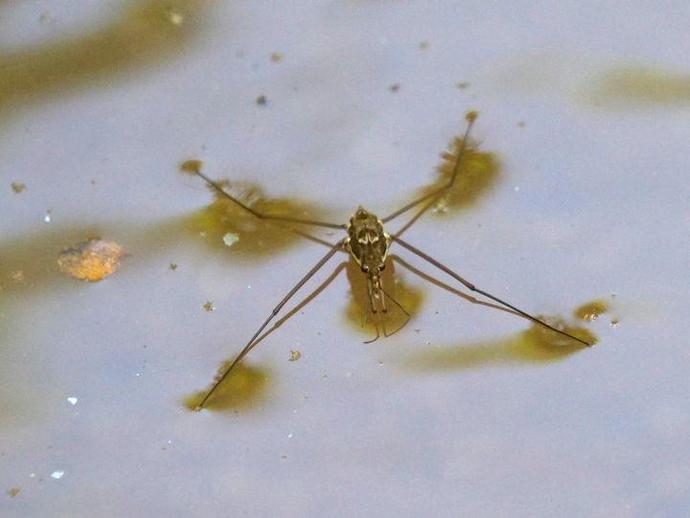June 21, 2021
It's time for today's edition of #BenInNature presented by our friends at Carter Bank & Trust!
You've probably seen water striders (family Gerridae) before, skating along the water's surface with ease. These guys can survive on pretty much any pond, river, or lake, and about 10 percent of the more than 1,700 species of water striders can even be found in marine environments. In fact, a few species of oceanic water striders (genus Halobates) live out in the open ocean and are only found near the coast when storms blow them inland, making them the only oceanic off-shore insects known to science!
At first glance, water striders appear to only have four legs, but like all insects, they actually have six; the front pair of legs are short and have "preapical claws," which means claws that form halfway through the leg rather than at the end of the leg (if you're having a hard time imagining what that looks like, praying mantises also have preapical claws). Water striders use these claws to grab their prey, which mostly consists of insects and spiders that tumble into the water. They sense the vibrations of a struggling prey item, race over to it, seize it with their claws, and pierce it with their mouthparts in order to suck out the delicious juices.
Of course, the big question is, how do these guys manage to walk on water? The answer comes from a combination of factors. Their legs are hydrophobic (meaning they repel water), and while the legs are long and slender, they're also strong and flexible, allowing water striders to evenly distribute their weight over a large surface area. Their bodies are also covered in hydrofuge hairs, which are tiny hairs (we're talking a few thousand per square millimeter!) that prevent water from sticking to water striders. Finally, water striders take advantage of the surface tension of water. Without surface tension -- for example, if a bunch of oil were floating on top of the water -- the water strider would sink.
While water striders seem like they would be an easy snack for fish, they secrete a scent that causes fish to avoid them except in instances of potential starvation. Birds will eat them, and frogs will sometimes eat them as well, but one of their most dangerous predators is other water striders! These insects will sometimes engage in cannibalism, generally when adult water striders prey on nymphs.
ABOUT #BenInNature
Social distancing can be difficult, but it presents a great opportunity to become reacquainted with nature. In this series of posts, Administrator of Science Ben Williams ventures outdoors to record a snapshot of the unique sights that can be found in the natural world. New updates are posted Monday - Friday, with previous posts highlighted on the weekends. This series of posts is made possible thanks to the support of VMNH Corporate Partner Carter Bank & Trust (www.cbtcares.com).
NATURE PHOTO IDENTIFICATIONS
If you discover something in nature that you would like help identifying, be sure to message us right here on Facebook with a picture (please include location and date of picture) and we'll have our experts help you identify it!

 Hours & Admissions
Hours & Admissions Directions
Directions

